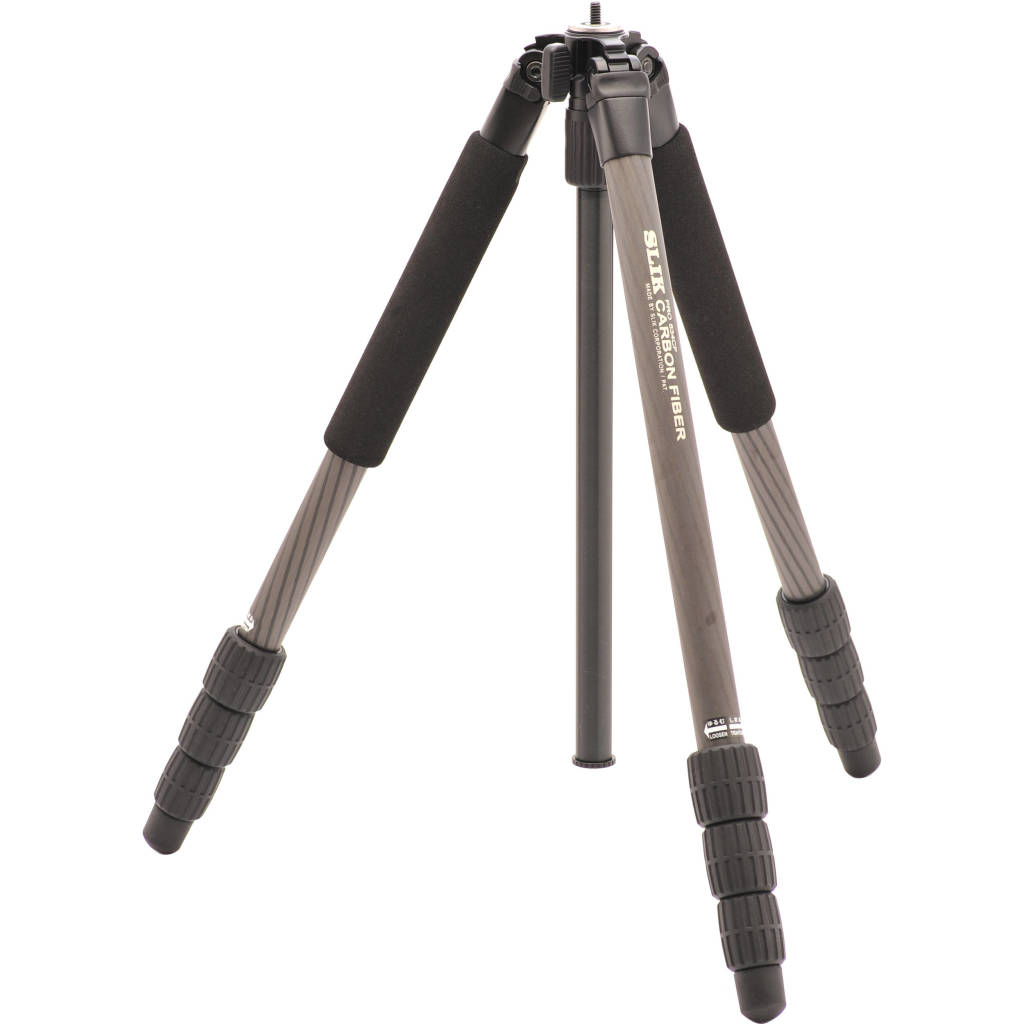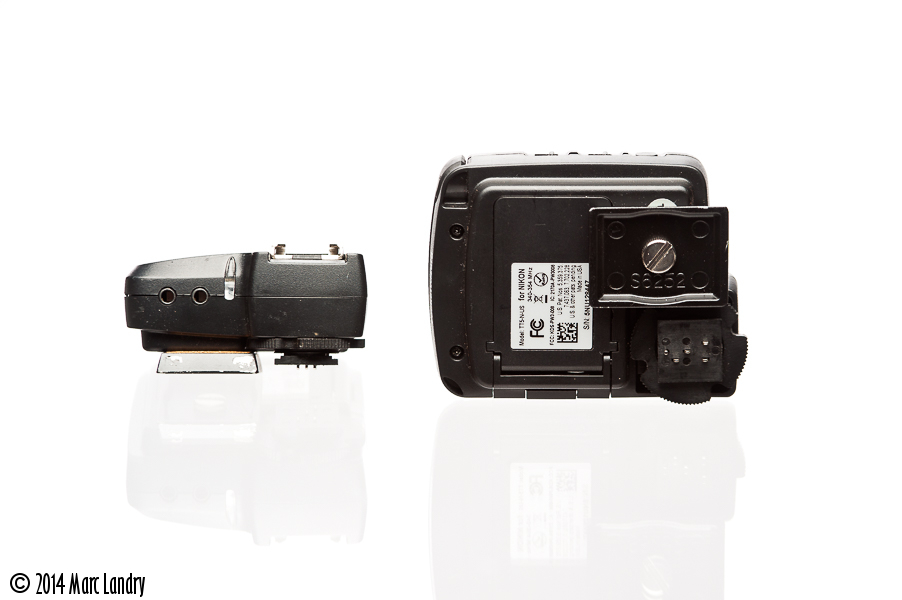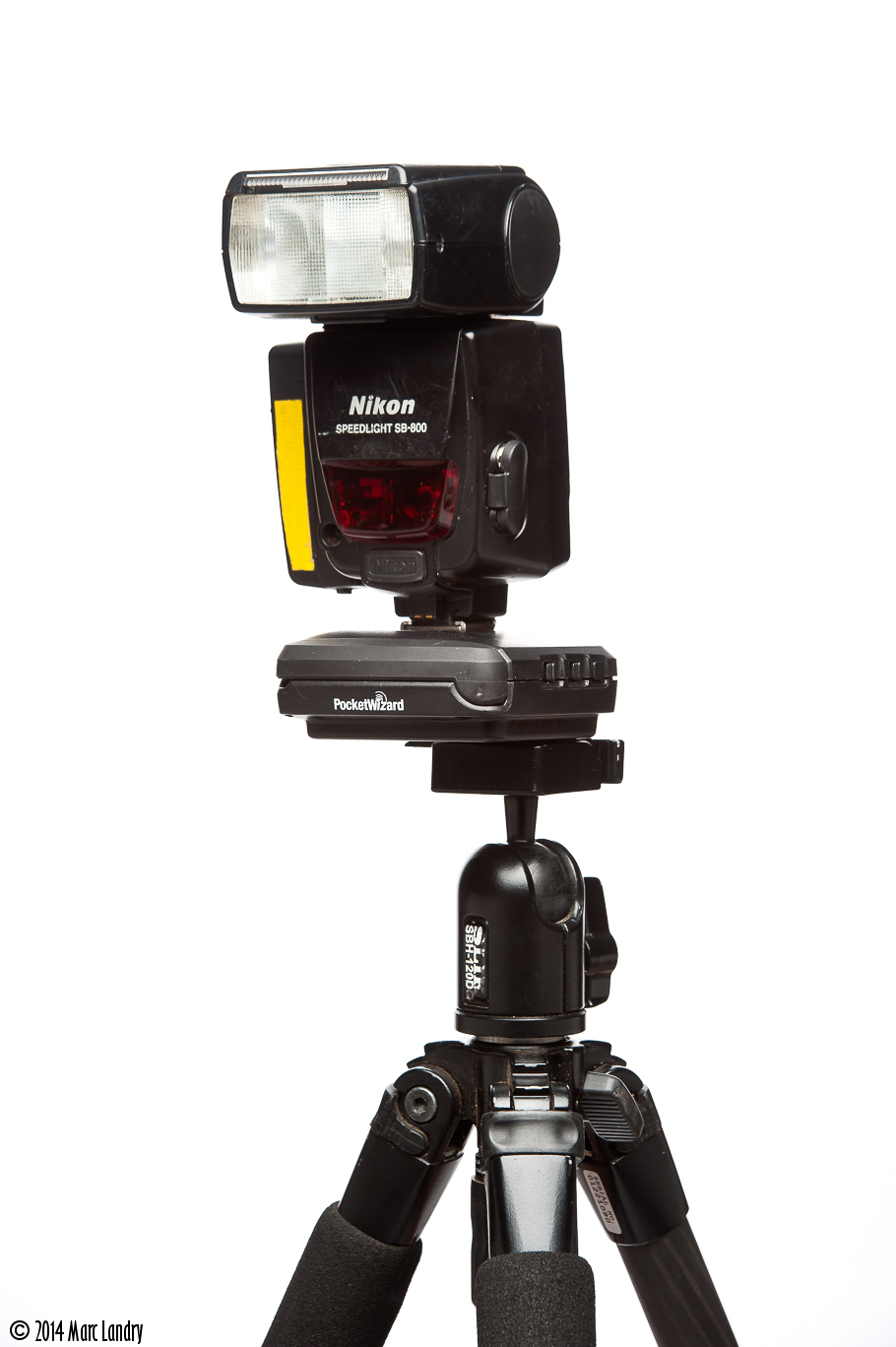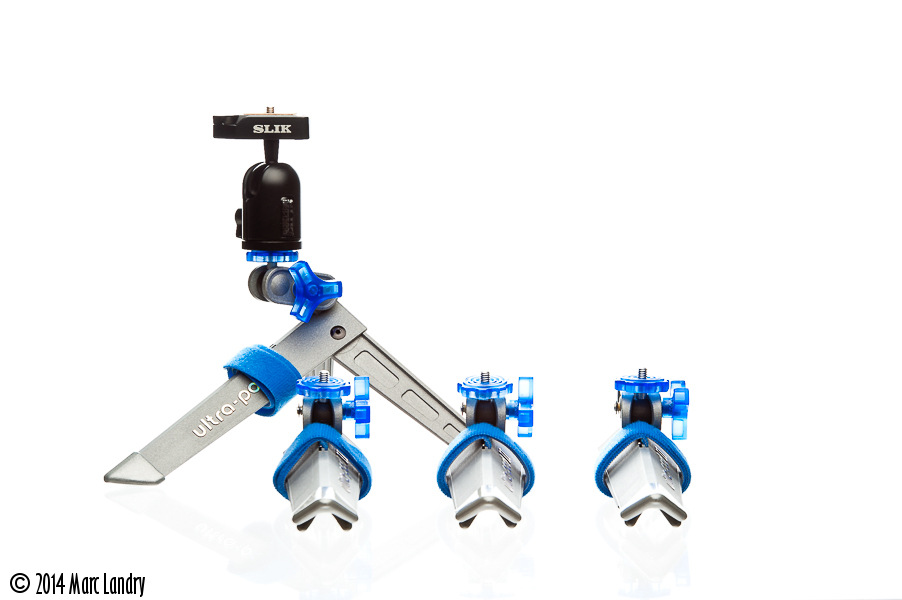Slik Pro 634 CF 4-Section Carbon Fiber Tripod
Slik Pro 634 CF 4-Section Carbon Fiber Tripod Review
- Rating
Let me first start off by saying that, while this is by definition a tripod, for the purposes of this review it is a lightstand because that is how I use it. So you are in fact getting two for one here; a review and how-to light outdoor sports. Actual lightstands are a completely different beast and are not suitable for sports photography, at least not the sports I shoot. Maybe a heavily sandbagged c-stand could be used for arena lighting, but certainly not in the field. Only a tripod can provide the adjustability and stable footing required to properly mount a strobe for shooting outdoor adventure sports.
Traditional lightstands are designed for studio work and are far from the ‘hot ticket’ for sports photography. Their legs only spread as a group and are not adjustable. Lightstands are barely stable enough to stay upright on solid ground, let alone in the dirt, on the side of a mountain or with any sort of breeze. Once their center columns are extended, they are extremely precarious. Kind of like the guy spinning plates at the end of a pole at the circus. Only a tripod allows for proper placement on uneven ground while remaining stable. A tripod can easily be weighed down and stabilized further, if need be, by hanging your camera bag or a battery pack from the center column. Most tripods have a hook there for this very purpose. It’s also a great way to keep your gear off the ground if it’s wet or muddy. When I see guys setting up actual lightstands on the side of a hill, I shake my head. Unless you have an assistant holding the lightstand, it has no business near spectators or athletes.
I own several tripods which I use as lightstands. I use rugged, aluminum Manfrotto 190XPROB tripods for my larger Ranger strobes and Slik Pro 634 Carbon Fiber tripods when using my speedlights. Either of them are decent enough to use as a tripod for my camera if necessary. I do have dedicated tripods as well however, but rarely use them for shooting sports. The tripod I use for my DSLRs is a Gitzo GT3530 carbon 6X and for video I use a Manfrotto 525MVB.
I have a few different methods I use to adapt the tripods into lightstands – none of them are rocket science. For the Manfrotto tripod, I simply thread a standard studio 3/8″ spigot to the tripod’s plate and it’s ready to use with any studio head: done. I use the Slik tripod in conjunction with a Slik SBH-120 DQ ballhead and quick release. I have QR plates attached to the bottom of all my Pocket Wizard FellTT5s and in two steps I have my remotes on the stands and the flashes on the remotes. I need to move quickly between locations and this solution I came up with works very well. It also saves me from using the more fragile plastic foot on the FlexTT5. Using the ballhead makes it much simpler for me to adjust my speedlights quickly and more precisely. I carry extra plates, which I can attach to my primary or a remote camera. I even have a few plates with spigots on them so that I can use studio heads if I need to. My Ranger heads and softbox mount on these without any issues. I prefer to use the Manfrotto tripods for this but, in a pinch, the Slik’s work fine. I can use the Powerpack to anchor it if the wind picks up.
I use the same ballhead an plate system for all my tripods, lightstands and grips. No matter what the situation or how I need to mount my lights, I am using the same attachment method. A big part of being a sport photographer is being a grip ( lighting and rigging technician). I have a completely different system for my Pocket Wizard Multimax setups and will cover that in another review/how-to.
My primary reason for going with these tripods was to save weight. Carbon fiber does have other benefits, like not getting so cold on winter shoots, but the weight was the main reason. I have so much gear to haul around that every bit counts.
The tripod is easy to deploy with a twist of the wrist and uses an A.R.S.(Anti Rotation System) to prevent the legs from rotating during tightening and loosening. I find the basic lever mechanism on my Manfrotto tripods faster because when the lever is opened, the legs just drop to full extension. With the twisting collar system you need to physically pull the leg down and push them back in. To collapse the Manfrotto tripod I just hold it upside down, flip the levers and everything drops into place. The Slik is a 4-section tripod and, while it doesn’t extend as high as the Manfrotto, it gets high enough. The tripod can be opened wide and laid almost flat. It looks like a sniper’s tripod and that is the way I typically use it when mounting a remote camera. Even though this tripod looks pretty delicate, it has stood up well during a busy season of shooting in less than perfect conditions. I’ve been really happy with this setup. This new system has cut half the weight from the one I used last year with no loss in performance. I do find the center column design was not very well thought out though. Not really a big deal in the big scheme of things.







